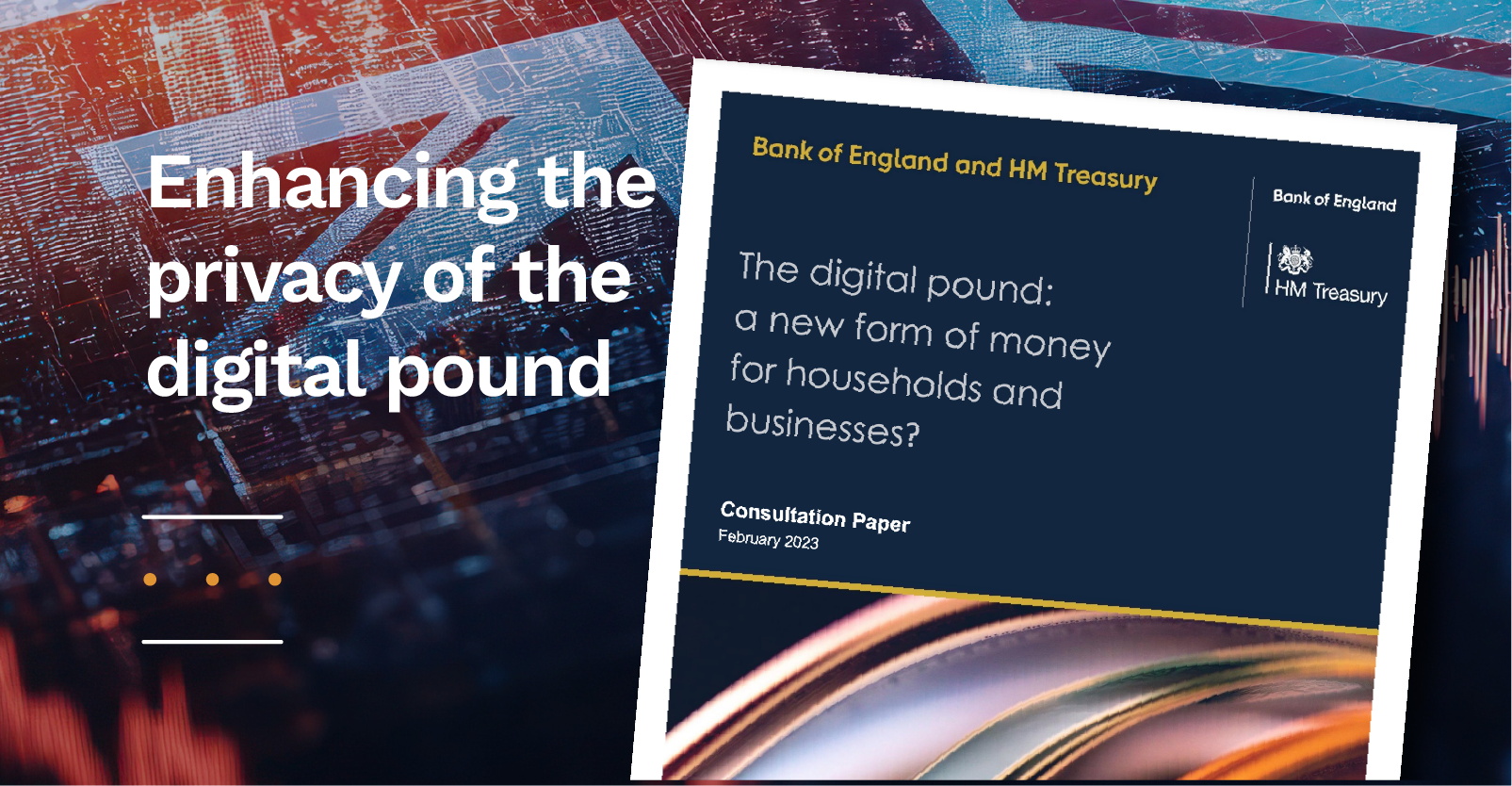Back in February 2023, the Bank of England published a consultation paper exploring the need for a ‘digital pound’. The idea proposed a new, digital form of cash, accessible from digital wallets, usable for payments across the economy, and essentially, a digital banknote.
There were over 50,000 responses, prompting the Bank to develop the idea much further in 2024, including their official response to the paper, released just one year later.
Naturally, the security of the digital pound (as well as the way it might be used) has been a key, highlighted concern. Among a number of detailed recommendations, the working paper suggested the use of Privacy-Enhancing Techniques (PETs) in digital pound wallets, providing users with control of personal data, and security of any data generated by transactions.
That’s why in December, an important piece of research into PETs was jointly published by the Bank of England and MIT’s Digital Currency Initiative.
The document, Enhancing the Privacy of a Digital Pound explores the feasibility of applying PETs to the digital pound, particularly with user-privacy in mind, alongside compliance with anti-money laundering and counter-terrorism requirements.
Interestingly, the report also focuses on the key-management challenge. Many of these technologies of course rely on cryptographic keys as well as the corresponding ability to safeguard them – a topic that resonates clearly with the message of the quantum threat.
The report makes it clear that it would be ‘prudent’ to prepare for this threat, particularly pointing out that the implementation of privacy-enhancing technologies must not introduce dependencies on vulnerable cryptographic algorithms. Crypto-agility will be essential.
“As the UK’s National Cyber Security Centre recommends, the best mitigation against the threat of quantum computing in the future is the adoption of quantum-safe or quantum-resistant cryptography now.” (3.4, p27)
It’s clear from the Bank of England then, that this layer of risk must be factored into the design of cash-based digital currency today, and in the process, collaboration with providers, third-parties, policymakers and other stakeholders is key.
It’s also another reminder that financial transactions are a major target for a potential quantum attack, whether in micropayments facilitated by the digital pound, or in larger transactions across networks and currencies. As a result, the security measures in place require a high level of robustness, and the technology that our money relies on must be protected at all costs.

